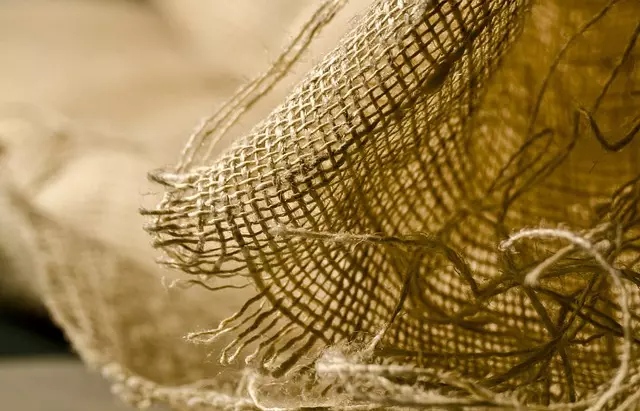Muscle soreness, commonly known as DOMS, often occurs after intense or unfamiliar physical activity due to muscle damage from eccentric contractions, heavy lifting, or prolonged exercise. The intensity of DOMS varies with individual fitness levels and types of activity. Understanding DOMS is crucial for recovery and maintaining performance for those regularly active. Malaysian Kratom Buds, derived from the Mitragyna speciosa tree, have been traditionally used in Southeast Asia for pain relief and increased stamina. Their alkaloids may interact with opioid receptors to provide relief from soreness. While kratom shows promise as a natural remedy due to its anti-inflammatory and analgesic properties, it's essential to adhere to recommended dosages to minimize side effects. Clinical trials and animal studies support the efficacy of kratom for pain relief, including muscle soreness post-exercise. However, users must exercise caution due to its psychoactive nature and potential for dependence, highlighting the importance of consulting healthcare professionals before use. Malaysian Kratom Buds can be consumed in tea form or as encapsulated kratom for precise dosing. Always monitor personal sensitivity, watch for negative side effects, and seek professional medical advice if they arise when using this natural remedy.
Muscle soreness is a common experience for individuals engaged in physical activity, ranging from routine exercise to intense athletic training. The discomfort can hinder performance and recovery, impacting overall well-being. Exploring effective relief strategies is crucial for maintaining an active lifestyle. Among the natural supplements gaining attention for their potential benefits in muscle soreness management are Malaysian Kratom Buds. This article delves into the scientific rationale behind their use, providing a comprehensive overview of how these buds can be integrated into a muscle soreness relief routine. From understanding the mechanisms of muscle soreness to practical tips on incorporating Malaysian Kratom Buds, readers will gain valuable insights for enhancing their recovery process and keeping physical activities a fulfilling part of their daily lives.
- Understanding Muscle Soreness and Its Relationship with Physical Activity
- The Role of Malaysian Kratom Buds in Muscle Soreness Relief: An Overview of Scientific Evidence
- Practical Guide to Integrating Malaysian Kratom Buds into Your Muscle Soreness Management Routine
Understanding Muscle Soreness and Its Relationship with Physical Activity

Muscle soreness, commonly known as delayed-onset muscle soreness (DOMS), is a condition that often occurs after engaging in unfamiliar or intense physical activities. This phenomenon is a natural response to microscopic trauma in the muscles, which can result from eccentric contractions, heavy resistance, or prolonged exercise beyond what the body is accustomed to. The intensity of muscle soreness can vary widely among individuals, influenced by factors such as fitness level and the nature of the activity undertaken. Understanding muscle soreness is crucial for those who regularly engage in physical activities, as it impacts recovery and performance.
In the realm of natural remedies for alleviating muscle soreness, Malaysian Kratom Buds have garnered attention due to their potential therapeutic properties. Traditionally used in Southeast Asia for pain management and stamina enhancement, kratom contains alkaloids that may interact with the body’s opioid receptors, providing relief from discomfort. When incorporating Malaysian Kratom Buds into a post-exercise regimen, it is important to adhere to recommended dosages to avoid overconsumption and potential side effects. The anti-inflammatory and analgesic effects of kratom may contribute to reducing muscle soreness, thereby facilitating a more comfortable recovery process for individuals who have pushed their physical limits through exercise or physical activity.
The Role of Malaysian Kratom Buds in Muscle Soreness Relief: An Overview of Scientific Evidence

Malaysian Kratom buds, derived from the Mitragyna speciosa tree native to Southeast Asia, have been traditionally used for their medicinal properties, including potential relief from muscle soreness. Scientific studies have begun to shed light on the mechanisms by which these buds may exert their effects. For instance, research has indicated that certain alkaloids found in Kratom, such as mitragynine and 7-hydroxymitragynine, may interact with opioid receptors in the brain, potentially offering analgesic effects. These compounds are believed to modulate pain perception by binding to mu-opioid receptors, which could explain their role in mitigating muscle soreness. Clinical trials and animal studies have provided evidence supporting the use of Kratom for pain relief, with specific attention to its anti-inflammatory properties that may aid in reducing the inflammation associated with muscle strain or exercise-induced soreness. Additionally, the efficacy of Malaysian Kratom buds in alleviating musculoskeletal discomfort has been documented in various case studies and self-reported user experiences, further substantiating its potential as a natural supplement for muscle soreness relief. However, it is crucial to approach the use of Kratom with caution due to its psychoactive effects and potential for dependence; thus, individuals should consult healthcare professionals before integrating Malaysian Kratom buds into their wellness regimen.
Practical Guide to Integrating Malaysian Kratom Buds into Your Muscle Soreness Management Routine

When managing muscle soreness, incorporating Malaysian Kratom Buds into your routine can offer a natural approach to relief. These buds contain alkaloids that are believed to have analgesic properties, which may help in easing discomfort caused by rigorous activity or injury. To effectively integrate these buds into your muscle soreness management regimen, it’s important to start with a low dosage to gauge individual sensitivity. Malaysian Kratom Buds can be consumed in various forms, including as tea or encapsulated for precise dosing. Preparing kratom tea involves simmering the buds in water for about 10-20 minutes; this not only extracts the beneficial compounds but also imparts a palatable flavor that many find acceptable. For those preferring a more straightforward approach, capsules can be filled with the appropriate amount of ground Malaysian Kratom Buds, allowing for a predetermined dose without the need to measure powder each time.
For optimal relief, it’s advisable to consult with a healthcare provider before introducing any new supplement into your routine, especially if you have underlying health conditions or are taking other medications. Additionally, maintaining a consistent schedule for kratom consumption can help manage muscle soreness more effectively. It’s also crucial to monitor your body’s response to the buds, as individual reactions may vary. If you notice any adverse effects, it’s important to discontinue use and seek medical advice. By following these guidelines and consulting with professionals, Malaysian Kratom Buds can be a valuable addition to your muscle soreness relief strategies.
Muscle soreness is a common experience for individuals engaging in physical activity, often leading to discomfort and hindered performance. The exploration of natural supplements like Malaysian Kratom Buds has provided promising insights into their role in alleviating muscle soreness. Grounded in scientific evidence, the potential benefits of these buds are clear and offer a viable alternative for those seeking relief from post-exercise discomfort. By understanding the mechanisms behind muscle soreness and integrating Malaysian Kratom Buds into one’s routine as outlined, individuals can effectively manage this issue and maintain an active lifestyle. This article has shed light on the practical application of these buds, underscoring their potential to contribute significantly to recovery and overall well-being for those who engage in strenuous physical activity.






